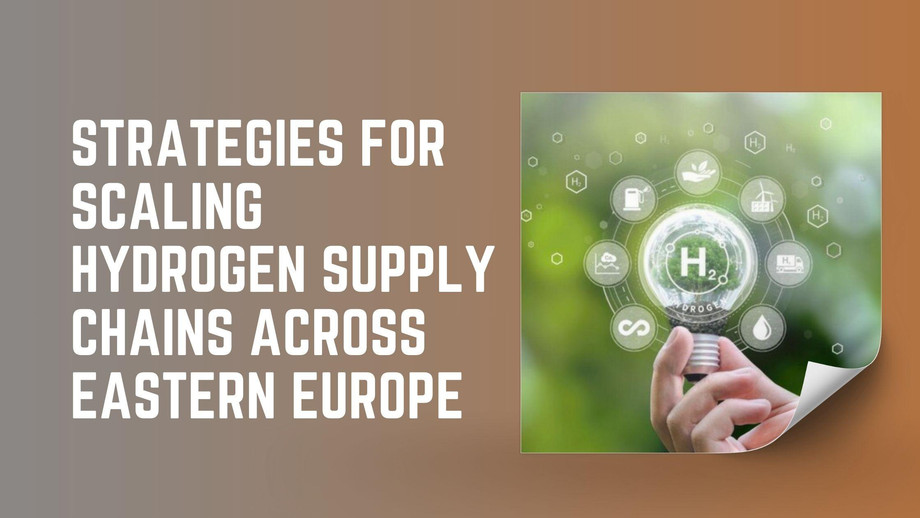As the global energy transition accelerates, Eastern Europe is emerging as a key player in the hydrogen economy. Governments and industries are increasingly focusing on hydrogen supply chains, aiming to boost production, improve infrastructure, and establish regional cooperation.
A major highlight of 2025 will be the Hydrogen Summit, a key event bringing together stakeholders to discuss strategies, partnerships, and innovations in hydrogen development. This article explores critical approaches for scaling hydrogen supply chains across Eastern Europe while shedding light on the significance of events like the World Hydrogen Summit 2025.
The Current State of Hydrogen in Eastern Europe
Eastern Europe has made significant strides in developing green hydrogen projects, yet several challenges persist. Key factors affecting scalability include:
-
Infrastructure limitations – A lack of dedicated pipelines and refueling stations.
-
High production costs – Electrolysis and carbon capture remain expensive.
-
Regulatory hurdles – Variations in hydrogen policies across nations slow progress.
-
Market demand – Industries are still adapting to hydrogen-powered solutions.
-
Cross-border collaboration – The need for unified EU strategies to enhance distribution.
Key Strategies for Scaling Hydrogen Supply Chains
1. Enhancing Hydrogen Production Capacity
-
Increasing investments in electrolysis technology to scale up green hydrogen production.
-
Utilizing nuclear power and renewable energy to create low-carbon hydrogen.
-
Government-backed subsidies to reduce the cost of hydrogen production.
2. Developing Robust Infrastructure
-
Expanding hydrogen transport via pipelines, storage facilities, and refueling stations.
-
Integrating hydrogen into existing gas grids to facilitate easier distribution.
-
Establishing hydrogen hubs and clusters for regional supply chain efficiency.
3. Policy and Regulatory Support
-
Aligning EU hydrogen policies with national roadmaps.
-
Offering tax incentives for hydrogen investments.
-
Streamlining permitting processes for hydrogen projects.
4. Encouraging Industrial Adoption
-
Expanding hydrogen fuel applications in steel production, transport, and power generation.
-
Public-private partnerships to scale industrial hydrogen usage.
-
Incentivizing fleet conversion to hydrogen-powered vehicles.
5. Strengthening Regional Collaboration
-
Bilateral agreements between Eastern European nations for seamless hydrogen trade.
-
Creating joint ventures to reduce investment risks and boost hydrogen accessibility.
-
Leveraging EU funding programs to develop pan-European hydrogen corridors.
Case Study: Poland’s Hydrogen Revolution
Poland has launched a National Hydrogen Strategy, targeting 2 GW of electrolysis capacity by 2030. Companies like Orlen and LOTOS are spearheading investments in hydrogen refueling stations and green hydrogen production, setting an example for the region.
The Role of the Hydrogen Summit in Advancing These Strategies
The 8th Edition CEE Hydrogen Summit in 2025 will play a pivotal role in addressing these challenges and identifying new opportunities. Industry leaders, policymakers, and innovators will gather to:
-
Discuss policy frameworks and regulatory advancements.
-
Showcase hydrogen-powered solutions across industries.
-
Highlight investment trends and funding opportunities.
-
Facilitate networking among hydrogen stakeholders.
The event will also complement global initiatives such as the World Hydrogen Summit 2025, which will provide insights into international hydrogen developments and their implications for Eastern Europe.
Key Insights from the World Hydrogen Summit 2025
The Hydrogen Summit will bring together energy leaders to discuss the future of hydrogen supply chains. Key topics will include:
-
Breakthroughs in electrolyzer technology
-
Hydrogen's role in achieving net-zero targets
-
Investment trends shaping the global hydrogen market
-
Scaling hydrogen adoption in emerging markets
Insights from this summit will directly impact hydrogen strategies in Eastern Europe, helping regional leaders align with global best practices.
Key Statistics on Hydrogen Growth in Eastern Europe
-
$50 billion – Projected hydrogen investments in Eastern Europe by 2030.
-
10,000+ hydrogen fuel cell vehicles expected on Eastern European roads by 2027.
-
5 GW – Planned electrolysis capacity in the region by 2035.
-
40% reduction in hydrogen production costs expected by 2030 with policy support.
FAQs on Scaling Hydrogen Supply Chains
1. Why is hydrogen crucial for Eastern Europe’s energy future?
Hydrogen offers a clean alternative to fossil fuels, reduces carbon emissions, and enhances energy security.
2. What are the main challenges to scaling hydrogen in the region?
Infrastructure, high production costs, regulatory inconsistencies, and market demand remain key barriers.
3. How will the 8th Edition CEE Hydrogen Summit contribute to hydrogen development?
It will bring together key stakeholders to discuss investment opportunities, policies, and infrastructure development.
4. How does the World Hydrogen Summit 2025 impact Eastern Europe’s hydrogen sector?
It provides a global perspective on hydrogen advancements, helping the region adopt best practices and innovations.
Conclusion
Scaling hydrogen supply chains across Eastern Europe requires a multi-faceted approach involving infrastructure expansion, policy alignment, industrial adoption, and regional collaboration. Events like the 8th Edition CEE Hydrogen Summit and the World Hydrogen Summit 2025 will serve as catalysts in driving hydrogen innovation and investments.
By leveraging strategic partnerships, government incentives, and technological advancements, Eastern Europe can position itself as a leader in the global hydrogen economy. Now is the time to accelerate the transition towards a sustainable hydrogen-powered future.

